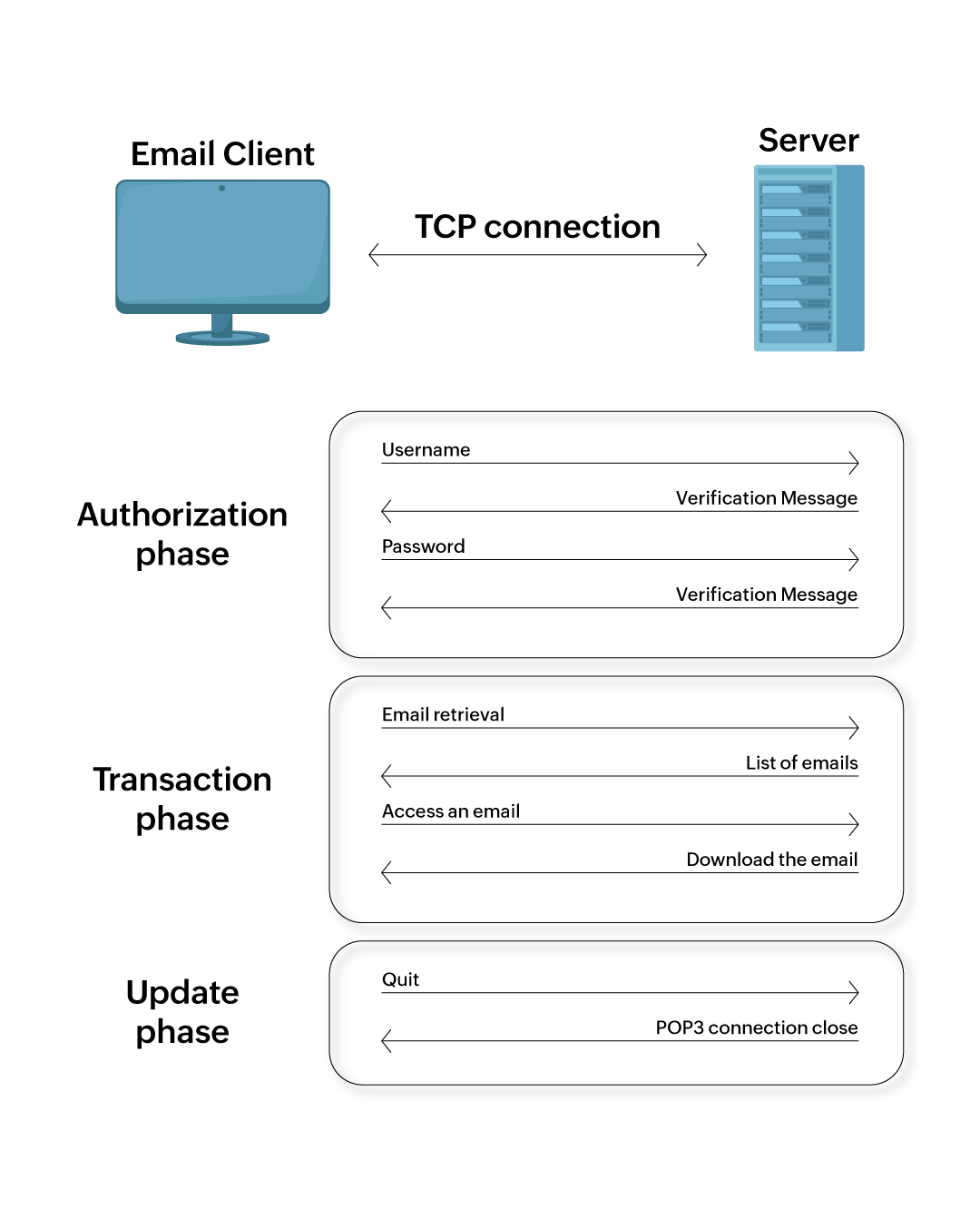- HOME
- All Products
- The essentials of POP3: What you need to know to view your emails
The essentials of POP3: What you need to know to view your emails
- Published : December 8, 2023
- Last Updated : May 2, 2024
- 1.3K Views
- 3 Min Read
Have you ever wondered how you can view your emails so easily when you click on them to read? It sounds like just a few seconds of loading for us, but a lot goes on behind the scenes. Post office protocol (POP3) is an application layer protocol used by email clients to download emails from an email server. Originally designed to be used on only one computer, it’s the most common email protocol in use.
How POP3 works
POP3 establishes a transmission control protocol (TCP) connection with an email server to retrieve emails from it. Once the TCP connection is established, POP3 conducts a three-phase activity: the authorization phase, the transaction phase, and the update phase.
Authorization phase
The email client tries to log in to the server by sending a username and password to authenticate the user downloading the email. The username and password are verified by the server, which sends a verification message for confirmation to the email client. After the client successfully logs in to the server, it enters the transaction phase.
Transaction phase
Here, a list of emails are sent from the email server to the email client. The email client accesses an email from the list and downloads it. The user can then mark the retrieved emails for sending, forwarding, deletion, and replying. The email client now enters the update phase.
Update phase
Here, the user sends a “Quit” command to the server. Using this command, the POP3 connection is terminated and the TCP connection is released. The email server then deletes all of the marked messages.

Benefits of using a POP3 server
POP3 functions primarily by downloading emails from the server for the user's access. Here are the ways this method of email retrieval is beneficial.
The selected emails that are downloaded from the server to the user's computer can be accessed even when the user is offline. This allows the user to view their emails without an internet connection.
POP3 is designed to delete emails from the email server immediately after the user has downloaded them to their local machine, which leaves more server storage space allowing the user to store more data.
With POP3, we can effortlessly and quickly view email attachments because they’re already downloaded from the server along with the emails. This reduces loading time and allows us to have convenient access.
POP3 has two modes between which the user can choose: In the delete mode, the email is deleted immediately after each retrieval from the server and cannot be restored. In the keep mode, the user can choose to store the email on the email server by manually choosing the “keep” option.
The storage capacity of emails is limited by the size of the hard disk. As all of the emails are downloaded on the user's local machine after retrieval from the server, it would be efficient for the user to have a hard disk with more storage to be able to download many emails.
We send and receive emails daily, and anything that’s put to use daily must be convenient to use. POP3 satisfies this criteria, because it’s easy to configure and use, and it’s become very popular for this reason.
Disadvantages of using POP3
While POP3 has been a widely used email protocol, it comes with its set of disadvantages.
POP3 doesn’t allow users to create folders and organize email on the server because the emails are deleted immediately after the user retrieves them. This causes trouble because the user cannot count on the server backup if their local machine crashes unexpectedly.
POP3 requires the user to download any email before viewing it and doesn’t allow users to partially check the content of the email beforehand. This sometimes leads the user to accidentally downloading malicious links and causes security issues to the user's data.
Wrapping up
Whether you're managing personal emails or overseeing communication for business entity, integrating POP3 streamlines the retrieval process with its widespread use and user-friendly features. Despite its advantages, such as swift access to messages and attachments, it's vital to consider its limitations, such as immediate server email deletion. Adapting your choice to specific email needs ensures a seamless and secure digital communication experience.
 Janani
JananiJanani is a product marketer for Zoho Workplace. She enjoys expressing her thoughts creatively while maintaining simplicity for better understanding. Janani has a passion for dance and connecting with nature. And of course, she loves her food!


